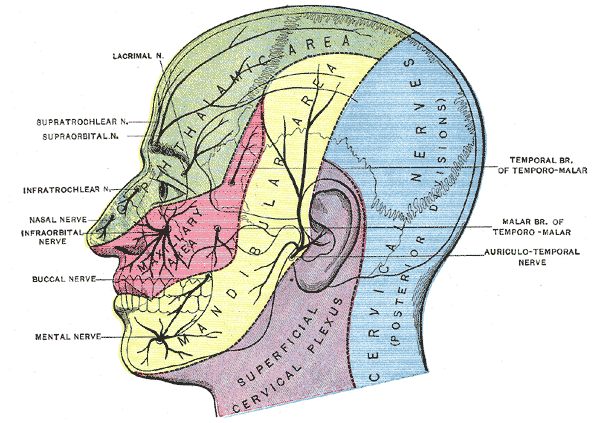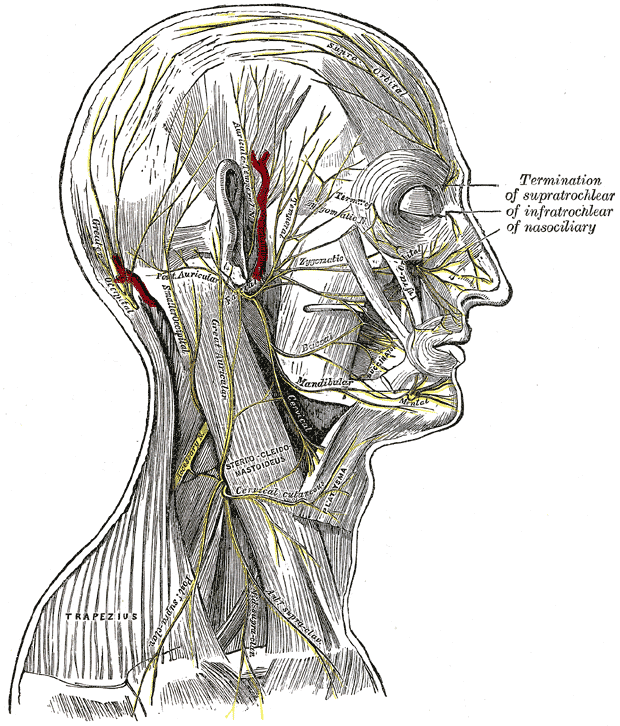Mandibular nerve
Template:Infobox Nerve Editor-In-Chief: C. Michael Gibson, M.S., M.D. [1]
The mandibular nerve (V3) is the largest of the three branches of the trigeminal nerve.
Structure
Roots
It is made up of two roots:
- a large sensory root proceeding from the inferior angle of the trigeminal ganglion.
- a small motor root (the motor part of the trigeminal), which passes beneath the ganglion, and unites with the sensory root, just after its exit through the foramen ovale.
Path
The two roots (sensory and motor) exit the middle cranial fossa through the foramen ovale. The two roots then combine. The nerve descends, soon splitting into an anterior division and a posterior division.
Immediately in the infratemporal fossa beneath the base of the skull, the nerve gives off two branches from its medial side: a recurrent branch (nervus spinosus) and the nerve to the medial pterygoid muscle. The mandibular nerve then divides into two trunks, an anterior and a posterior.
Branches

The mandibular nerve gives off the following branches:
- From the main trunk of the nerve (before the division)
- nervus spinosus (meningeal branch)
- medial pterygoid nerve
- nerve to tensor tympani
- nerve to tensor veli palatini
- From the anterior division
- masseteric nerve
- deep temporal nerves (anterior and posterior)
- buccal nerve (a sensory nerve)
- lateral pterygoid nerve

- From the posterior division
- auriculotemporal nerve
- lingual nerve
- inferior alveolar nerve
- motor branch to mylohyoid and anterior belly of digastric muscles (mylohyoid nerve)
The mandibular nerve also gives off branches to the otic ganglion
Supplies
The mandibular nerve innervates:
- mucous membrane of the anterior two-thirds of the tongue
- the inside of the cheek (the buccal mucosa)
- teeth and gums of the mandible
- skin of the temporal region
- auricula
- lower lip, and chin
- muscles of mastication
- the muscles tensor tympani and tensor veli palatini
See also
Additional images
-
Dermatome distribution of the trigeminal nerve
-
The nerves of the scalp, face, and side of neck.
External links
Template:Cranial nerves Template:Trigeminal nerve
de:Nervus mandibularis
nl:Nervus mandibularis

